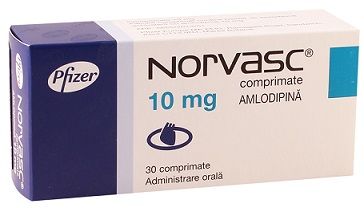Norvasc Guide: Treating High Blood Pressure Effectively
Table of Contents
- What is Norvasc?
- How Norvasc Works
- Indications for Use
- Recommended Dosage
- How to Take Norvasc
- Benefits of Norvasc
- Potential Side Effects
- Precautions and Warnings
- Drug Interactions
- Norvasc to Buy – Online Purchase Tips
What is Norvasc?
Norvasc, known generically as amlodipine besylate, is a calcium channel blocker used to treat high blood pressure (hypertension) and chest pain (angina). It works by relaxing blood vessels, allowing blood to flow more easily and reducing the heart’s workload.
How Norvasc Works
Norvasc blocks the influx of calcium into vascular smooth muscle and cardiac muscle. This leads to the dilation of peripheral arteries and a decrease in peripheral vascular resistance, ultimately lowering blood pressure and reducing the frequency and severity of angina episodes.

Indications for Use
Norvasc is prescribed for several cardiovascular conditions, including:
- Essential hypertension (high blood pressure)
- Chronic stable angina
- Vasospastic (Prinzmetal's) angina
- Coronary artery disease (CAD) without heart failure
Recommended Dosage
The usual starting dose of Norvasc for adults is 5 mg once daily. Depending on the individual response, it may be increased to a maximum dose of 10 mg daily. For elderly or liver-impaired patients, a starting dose of 2.5 mg may be appropriate.
Children aged 6–17 years with hypertension may start with 2.5 mg daily, with a maximum of 5 mg daily.
How to Take Norvasc
Norvasc tablets are taken orally, with or without food, once a day. Try to take it at the same time each day to maintain consistent blood levels. Swallow the tablet whole with a glass of water—do not crush or chew.
Continue taking Norvasc even if you feel well, as high blood pressure often has no symptoms.
Benefits of Norvasc
When taken correctly, Norvasc offers numerous cardiovascular benefits:
- Reduces blood pressure, lowering the risk of heart attack and stroke
- Relieves angina symptoms, improving physical endurance
- Improves overall heart function and blood flow
- Long half-life allows for once-daily dosing
These effects are most effective when combined with lifestyle changes such as a heart-healthy diet, regular physical activity, and smoking cessation.
Potential Side Effects
Like all medications, Norvasc may cause side effects. Most are mild and transient, such as:
- Swelling of the ankles or feet (edema)
- Headache
- Fatigue or dizziness
- Flushing
- Nausea
Less common but serious side effects include rapid heartbeat, fainting, or allergic reactions. Contact your healthcare provider immediately if these occur.
Precautions and Warnings
Before using Norvasc, discuss with your doctor if you have:
- Liver impairment
- Severe heart failure or recent heart attack
- Low blood pressure (hypotension)
Norvasc is generally well-tolerated in elderly patients but should be used with caution in individuals with hepatic insufficiency. It is not recommended during pregnancy unless absolutely necessary.

Drug Interactions
Norvasc may interact with the following medications:
- Simvastatin (risk of increased side effects)
- Other antihypertensives (additive blood pressure lowering)
- Grapefruit juice (may alter drug metabolism)
- CYP3A4 inhibitors like ketoconazole or erythromycin
To minimize risk, inform your healthcare provider of all medications, supplements, and herbal products you are taking.
Norvasc to Buy – Online Purchase Tips
If you’re looking for norvasc to buy, choose a reliable and certified online pharmacy. Ensure the site requires a valid prescription, provides secure payment options, and offers detailed product information. Avoid purchasing from sources that do not clearly identify their licensing or customer support channels.
Conclusion
Norvasc is a highly effective treatment option for managing high blood pressure and certain types of angina. Its once-daily dosing, long duration of action, and favorable side effect profile make it a popular choice among physicians and patients alike. To achieve the best results, take it consistently, monitor your blood pressure, and follow your doctor’s recommendations for a healthier heart and lifestyle.

